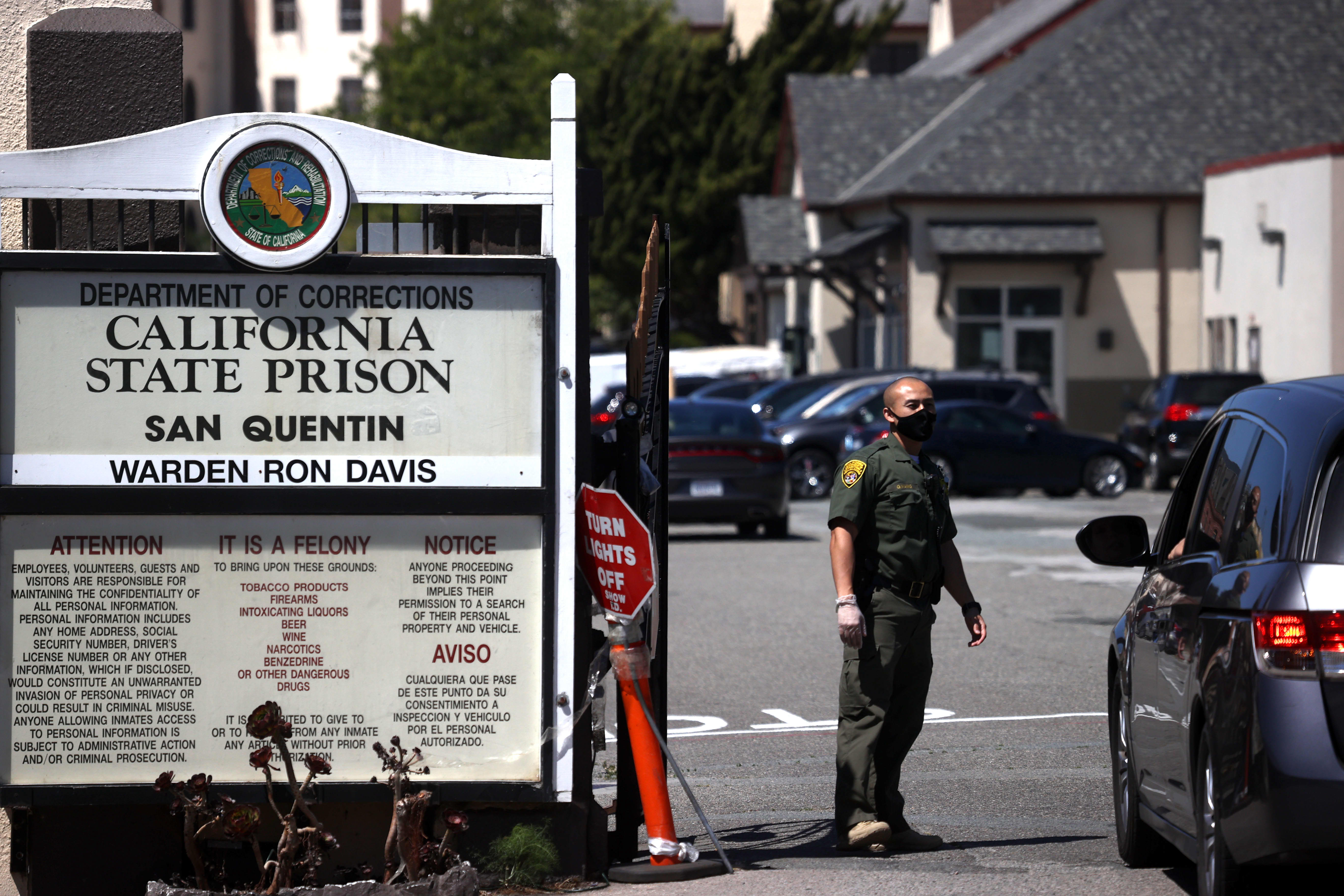Dr. Scott Bauer normally treats veterans at the San Francisco Veterans Affairs Medical Center. But when the internist heard about an opportunity to volunteer at San Quentin State Prison during the coronavirus outbreak, he raised his hand.
San Quentin, a Bay Area-based prison for men and the oldest institution of its kind in California, has experienced a staggering Covid-19 outbreak in recent months. About two-thirds of its residents have tested positive for the coronavirus and 25 people have died so far. Now, about two months after the outbreak took off, infections are starting to slow down. Internal prison data shows that there are only 37 confirmed active cases of the virus and only three positive tests within the past two weeks.
While San Quentin and other prisons may have seen the worst of the outbreak, it’s not over for the incarcerated men and staff. For some patients, it’s been months since they first tested positive. And the road to recovery has been stilted and slow.
Dr. Bauer had never been to a prison before he walked into San Quentin. During his first visit back in mid-July, he was accompanied by a correctional officer while seeing inmates on death row and in the death row medical clinic. In other blocks, he could move around more freely. Many of the patients reminded him of the veterans he treats, as they tend to be older and have comorbidities, meaning they have other medical conditions that might put them at a higher risk of dying if they catch Covid-19.
Earlier in the summer, several doctors from Amend, a group at UCSF and the University of California, Berkeley that’s working to transform correctional culture, wrote an urgent memo about vulnerabilities at San Quentin. What those doctors saw alarmed them. That memo called for more resources on the ground and a plan to address overcrowding to stem the outbreak.
“We saw incredibly rapid transmission there,” Dr. David Sears, a director of healthcare quality at Amend, said in an interview in July.
The group recommended some immediate reforms, including better ventilation, more quarantine isolation spaces, and increased testing with a faster turnaround time.
“The urgent resources San Quentin requires range from human capital to environmental risk reduction and rapid testing,” the group wrote in the June 15 memo. “Failure to meet these urgent needs will have dire implications for the health of people incarcerated at San Quentin, custody, staff, and the healthcare capacity of Bay Area hospitals.”
Some of the measures appeared to have made an impact, including the release of about 1,000 inmates to reduce overcrowding. The prison also increased its testing program. But the changes weren’t made in time to stop the virus from spreading quickly, eventually infecting more than 2,000 people.
Dr. Bauer has now worked about a dozen shifts at the prison where he usually gets in at 8 a.m. and leaves at 5 p.m. A big part of the job involves evaluating those who were treated in community settings, such as local hospitals, and then returned to San Quentin after their symptoms alleviated.
Many Covid-19 patients outside of San Quentin have told him they’re still experiencing fatigue, muscle aches, shortness of breath and other symptoms for months after recovering from the coronavirus.
Many patients still have a persistent cough, lingering fatigue and a limited ability to exercise weeks after testing positive. Recently, Dr. Bauer said, San Quentin has been opening up access to the yards.
He’s also seen evidence of cognitive impairments, developmental delays, depression, anxiety and some evidence of Post-Traumatic Stress Disorder from patients who were put on a ventilator. For volunteers who’ve only been there a few months, it’s hard to say how much of that stems from Covid-19 and how much of that was present before the infection.
“There’s a very robust mental health system at the prison and I know everyone has been working very hard,” he said.
For Dr. Bauer, the experience has been an “eye opener” because it’s helped him understand more broadly how countries may struggle to cope with large volumes of people who are still experiencing symptoms in the long-run, particularly those with limited resources. He suspects that it might weigh on health systems and providers outside of the correctional facilities. One recommendation involves bringing in pulmonologists, who specialize in treating lung conditions, at places like San Quentin and share best practices for post-Covid-19 care.
Outside of prisons, hospitals are setting up specialized clinics for those who are still struggling. Doctors across the country are still learning why certain people continue to experience symptoms for so long, while others bounce back more quickly.
“More direct access to people with expertise in managing symptoms would be helpful,” said Dr. Bauer.
